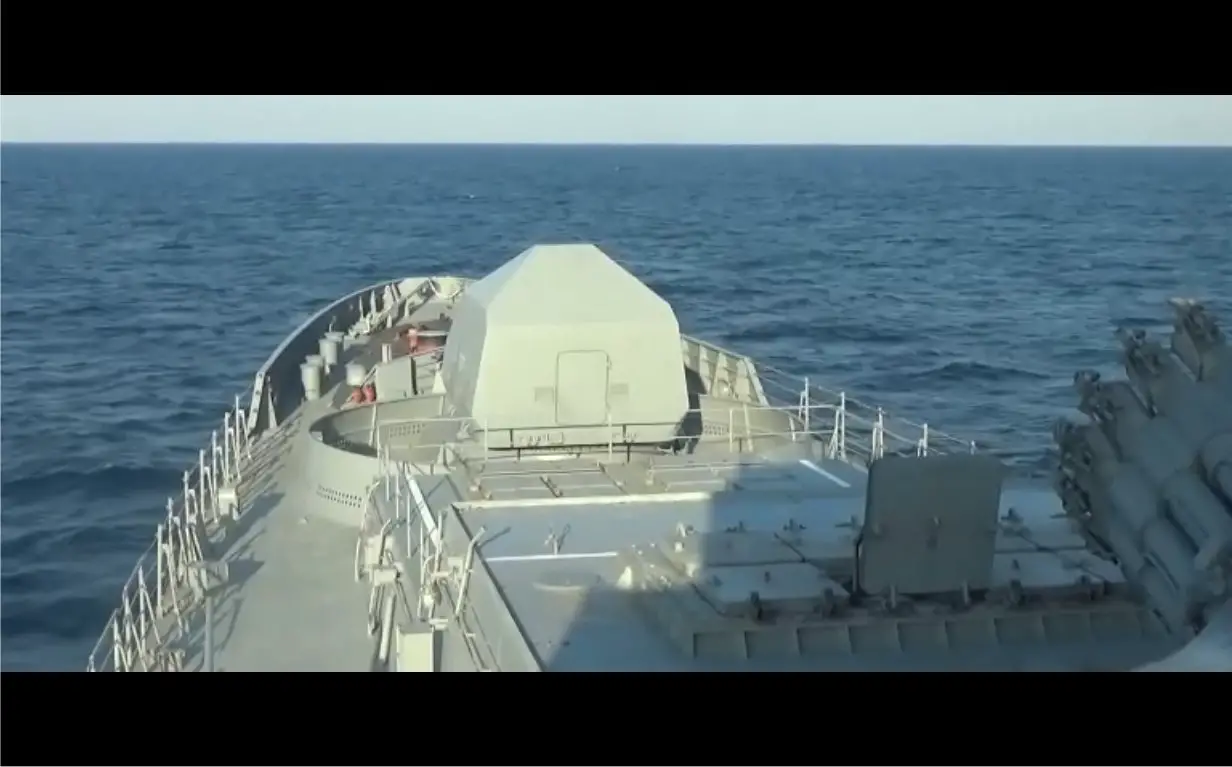Breaking news
Russian Admiral Grigorovich-class frigate fires Kalibr missiles on Ukraine.
According to information published by Военный Осведомитель on April 10, 2022, a Russian Navy's Admiral Grigorovich-class frigate fired Kalibr missiles against Ukrainian military infrastructure.
Follow Navy Recognition on Google News at this link
 Russian Admiral Grigorovich-class frigate firing Kalibr missile on Ukrainian targets (Picture source: Russian Ministry of Defense)
Russian Admiral Grigorovich-class frigate firing Kalibr missile on Ukrainian targets (Picture source: Russian Ministry of Defense)
The Admiral Grigorovich class also referred to as Krivak IV class, Russian designation Project 11356R/М, is a class of frigates built by the Yantar Shipyard in Kaliningrad for the Russian Navy and Indian Navy, with a cost of 450-500 mill$.
Admiral Grigorovich displaces 3,620 tonnes (3,560 long tons) and 4,035 tonnes (3,971 long tons) tons when fully loaded. The ship's length overall is 124.8 m (409 ft 5 in), beam 15.2 m (49 ft 10 in), and draught 4.2 m (13 ft 9 in).
Based on the Talwar class, six ships were ordered for the Russian Black Sea Fleet under two contracts in 2010 and 2011 as a complement to the Admiral Gorshkov-class frigates.
The Admiral Grigorovich-class frigate is armed with one 100 mm A-190 Arsenal naval gun, UKSK VLS (Vertical Launching System) cells able to launch Kalibr, Oniks, or Zircon anti-ship cruise missiles, 24 3S90M VLS cells for 9M317M surface-to-air-missiles, two AK-630 CIWS (Close-In Weapon System), 8 Igla-S or Verba air defense missile systems, two double 533 mm torpedo tubes and one RBU-6000 rocket launcher.
The 3M14 Kalibr (NATO designation SS-N-30A) is a Russian land-attack cruise missile (LACM) that can be launched from ships or submarines. Russian plans to deploy Kalibr missiles to all new nuclear and non-nuclear submarines, corvettes, frigates, and larger surface ships.
Russia has developed a family of Kalibr cruise missiles including five versions two anti-shipping types, one for land attack, and two anti-submarine types. The missile is designed to share common parts between the surface and submarine-launched variants but each missile consists of different components, for example, the booster. The missile can be launched from a surface ship using a Vertical Launch System (VLS).




























